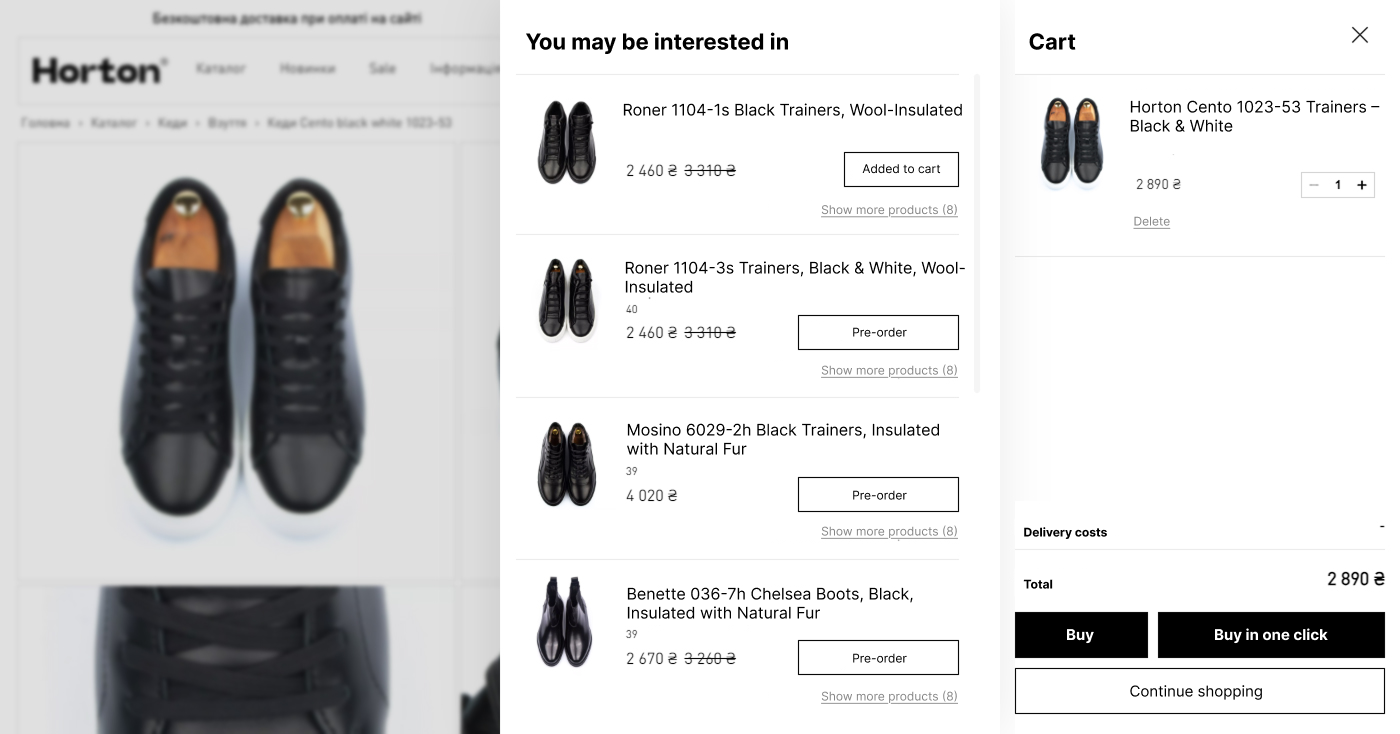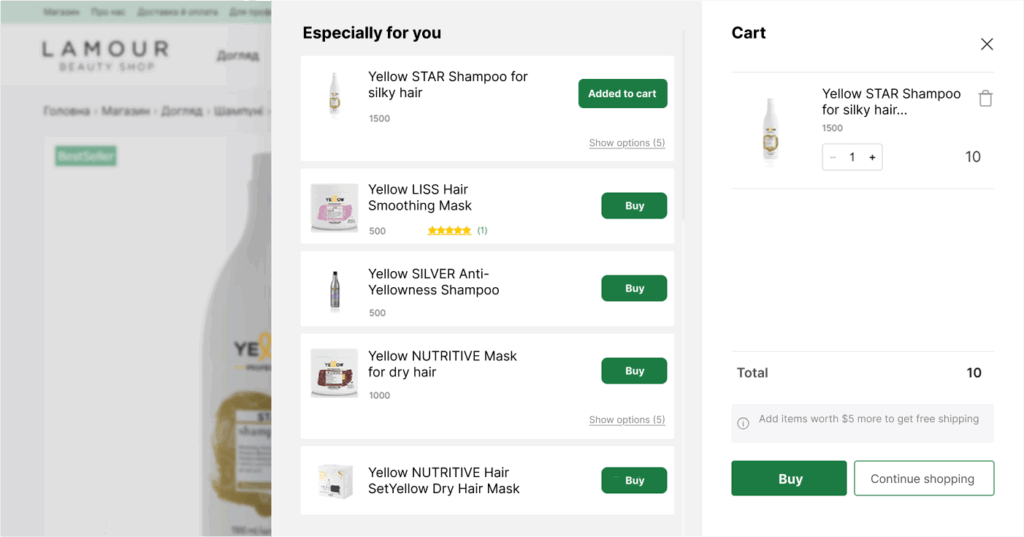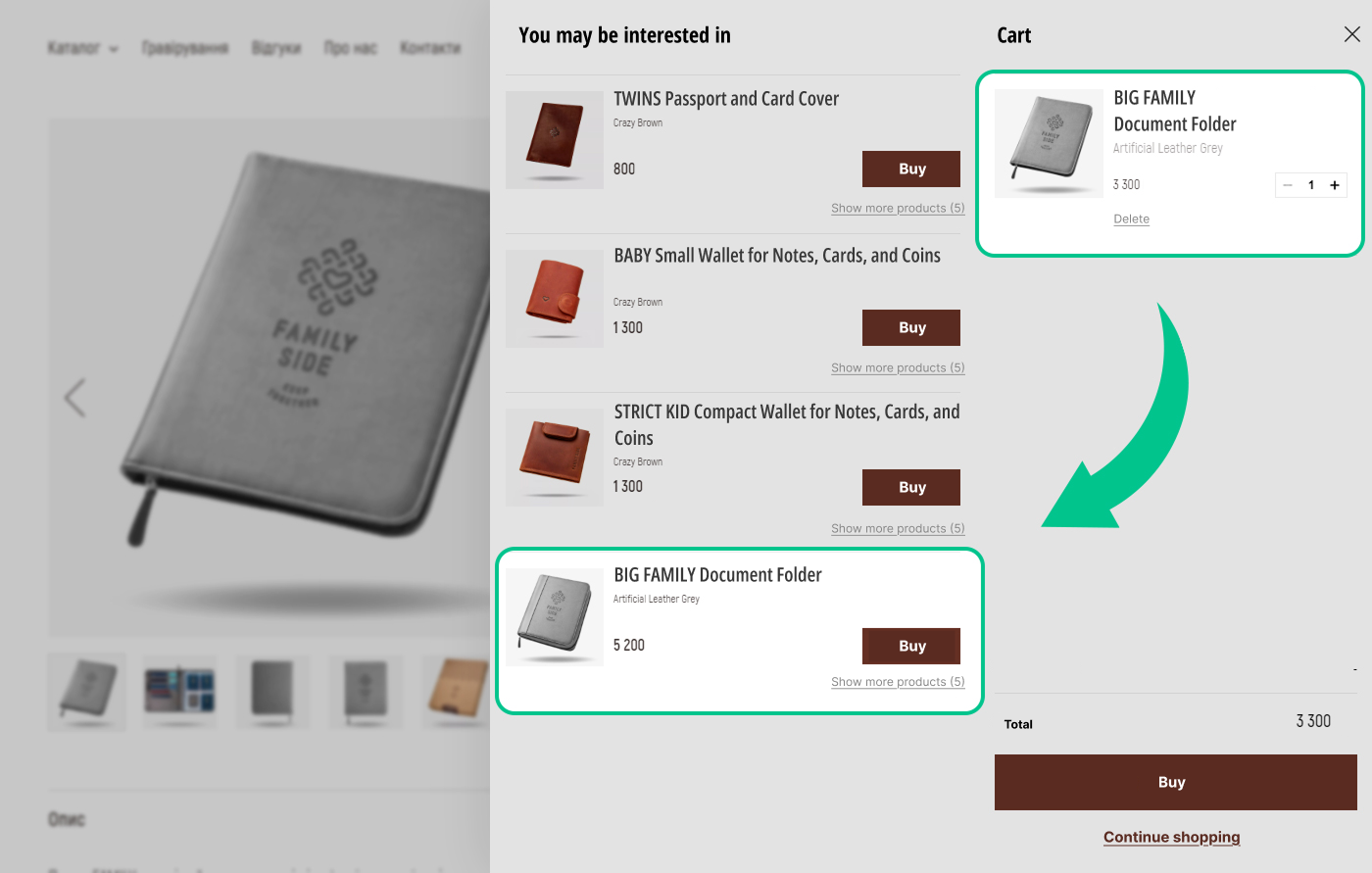For any e-commerce business, maximizing profitability and increasing sales is crucial. Naturally, all sellers aim to increase the average order value in their online stores. To solve this problem, there are proven solutions: cross-selling and upselling techniques. The Shop-Express platform team shares their experience and advice on the most effective ways to implement these techniques in your online sales strategy.
What’s the difference between Cross-selling and Upselling?
These two techniques are quite similar, but have essential differences. Let’s start by defining the terms.
Cross-selling is a technique that encourages customers to purchase complementary items. Some typical examples of cross-selling:
- offer the customer shoes and accessories that will match the dress;
- recommending a mouse and power bank to a customer who purchases a laptop.
Upselling is the practice of encouraging customers to purchase a more expensive product or add premium features to their selected items. A few typical examples:
- a retailer might offer a customer an upgraded version of the same smartphone with expanded storage capacity;
- in a specialty coffee and tea shop, customers may be offered a larger size or premium version of their selected blend.
«In any retail niche, cross-selling and upselling are important strategies for both marketers and business owners. These techniques enable you to sell premium products and complementary items alongside customers’ primary purchases, ultimately increasing your average order
Alla Petrichenko,
founder of the Shop-Express platform.

When you set up this mechanic in the administrative panel of your online store, the customer will see additional offers in the form of widgets next to the product they are buying.
How Cross-Selling and Upselling affect online store sales
The impact of both techniques on sales is substantial. According to Forrester Research has shown that cross-selling accounts for 10-30% of all e-commerce revenue. As for upselling, it generates about 4% of additional revenue. You’ll agree that these figures are worth implementing both mechanics in your sales strategy.
Benefits for an online store
- Sales growth. The average order value and overall sales volume grow significantly.
- Increased customer loyalty. Well-thought-out and relevant cross-selling and upselling recommendations create a positive impression and demonstrate your commitment to meeting customer needs. This is what builds customer loyalty.
Benefits for the customer
- Well-crafted offers save customers time by helping them quickly find the right products.
- Upselling and cross-selling improve the in-store shopping experience and the overall level of customer satisfaction.
Psychological aspects of Cross-Selling and Upselling
The sales techniques described above will be effective if you have a good understanding of the psychological characteristics of your business target audience. There are three basic psychological patterns that should be taken into account when building a sales strategy.
- Loss aversion effect. People tend to value what they might lose more highly than what they might gain. That is why it is very effective to use the techniques of ‘limited offer’ or ‘exclusive opportunity’.
- The principle of reciprocity. When customers receive valuable offers that genuinely meet their needs, they’re more inclined to reciprocate by making a purchase.
- Social proof. People tend to trust the opinions of others, especially those who have something in common with them. That’s why cross-selling and upselling will be even more effective when combined with feedback from real customers.
Challenges and complexities
When implemented poorly, cross-selling and upselling techniques can actually harm your business. There are two aspects:
- Information overload. When customers are faced with too many choices, they often end up making no purchase at all.
- Distrust and resistance. Overly aggressive marketing can cause your audience to perceive the brand or seller as pushy and intrusive.
To prevent negative reactions, set up offers that are as relevant as possible. In this case, quality is more important than quantity.
Types of product offers for Cross-Selling and Upselling
Let’s consider what product offers can be used for each of the online store sales methods.
Cross-selling
- Gift wrapping. Many online sellers, even large ones, do not always offer gift wrapping. However, this offer, which is relevant for many customers, can significantly increase the average check.
- Individual offers based on purchase history. To better understand your customers’ needs, analyse their purchase history. This will provide the most accurate information for personalised offers. For example, a bookstore customer can be offered books of their favourite authors or genres.
- Products that are often bought together. You can offer accessories or consumables as add-ons to the main purchase.

Upselling
- Premium versions. This is a common practice in the electronics industry: well-known brands often offer upgraded versions of their products with more storage, better screens, and other improvements.
- Larger packages at a better price. This option is particularly effective for online stores selling such products as groceries or pet supplies.
- Extended warranty. This approach is also widely used in the appliances and electronics sectors. For an additional fee, buyers receive longer and more favorable warranty coverage — especially valuable for high-ticket items.
- Additional services. This means selling additional services as a supplement to the product.

How to choose products for Cross-selling and Upselling
The selection of products for cross-selling and upselling can be divided into two main stages. Let’s talk about each of them in more detail.
Select products based on analytical data
- Track the user’s purchase history. This can be easily done using the built-in functionality of the platform for creating an online store, such as Shop-Express, or the CRM system used by the business.
- Identify popular product combinations. Uploading and analysing information about purchases will help you determine which product combinations are popular.
- Use Google Analytics data. Information about user behaviour on the pages of your online store will help you to clarify the conclusions from the analysis of purchase history.
Creating sets and special offers
- Create ready-made sets at a discount. You can offer sets of the main product and add-ons in your online store. This cross-selling technique is very effective.
- Additional products on the product page. You can display recommended additional products on the product page, in the shopping cart, or during checkout.
Conclusions
Cross-selling and upselling techniques are extremely effective in increasing the sales and profitability of an online store. They work for all niches, as they allow for many variants of use.
Here are key tips on how to use cross-selling and upselling effectively:
- Analyse your customers’ purchase history using CRM and the capabilities of your online store platform, identify common combinations of products in orders.
- Offer customers relevant and useful products in addition to their main purchases.
- Test and use different types of upselling and cross-selling offers.
- Offer pre-made product bundles at a discounted price.
- Constantly analyse results to make the necessary adjustments to cross-selling and upselling.

